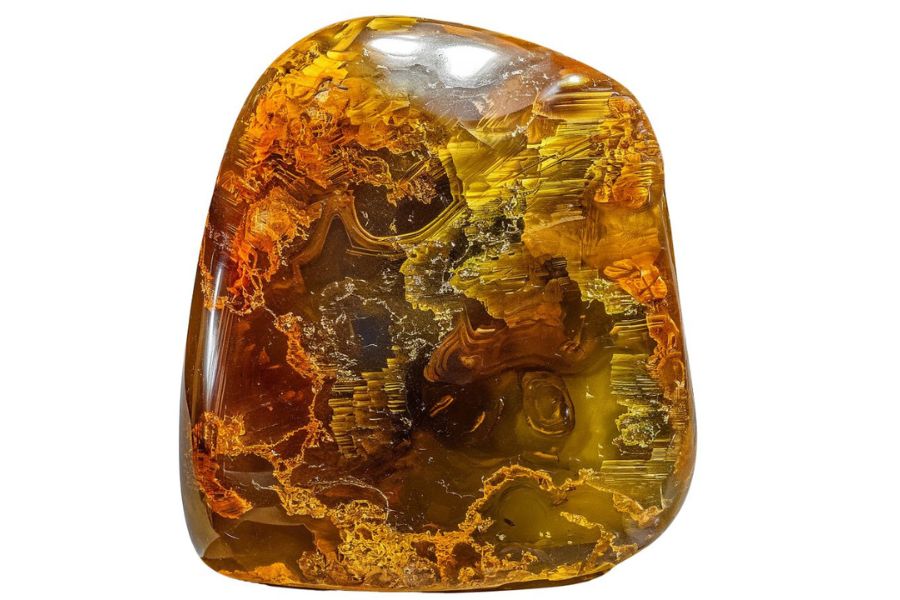Amber shows up in Kansas where the land remembers its prehistoric past. In pockets of ancient riverbeds, eroded hillsides, and overlooked patches of sediment, this fossilized resin still turns up in pieces large enough to keep collectors coming back. It doesn’t take luck—it takes knowing where the right conditions still exist.
Some of these spots have been turning up amber for decades. Others are lesser known but promising, shaped by the same geological forces. Together, they cover a surprising range of terrain, from chalky bluffs to low, sandy draws.
Every place that follows is worth visiting. These aren’t speculative guesses or vague mentions. They’re specific locations where people have found amber—and where you can, too.
How Amber Forms Here
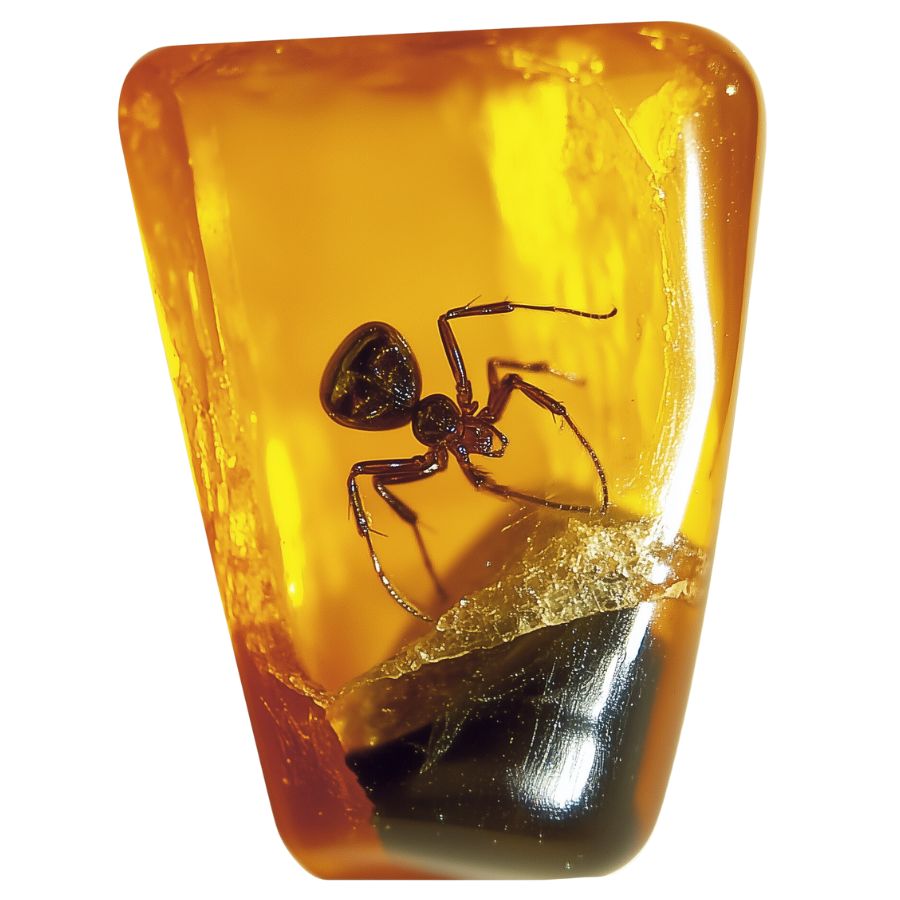
Amber begins its journey as sticky resin flowing from ancient trees millions of years ago. When insects or small plants got trapped in this golden liquid, they became perfectly preserved time capsules.
Over thousands of years, the resin hardens through a process called polymerization, where molecules link together to form larger, more complex structures.
As layers of sediment buried these hardened resin deposits, pressure and time transformed them into the gemstone we know as amber.
The process requires specific conditions: the resin must be protected from oxygen and excessive heat while maintaining steady pressure from surrounding rock and soil. That’s why we often find amber in sedimentary rock formations.
Types of Amber
You might think amber just comes in that classic honey color, but there’s actually an incredible variety of amber types out there – each with its own unique characteristics and formation story. Let’s dive into the most common ones you might come across.
Baltic Amber
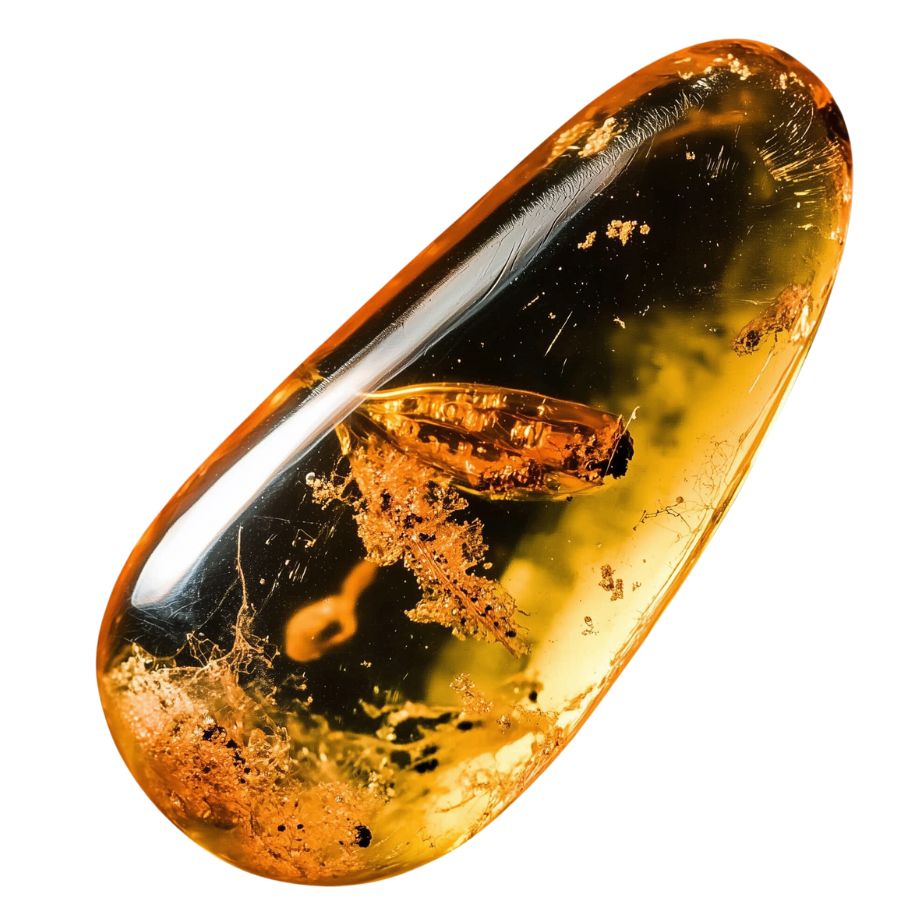
Baltic amber stands out with its warm spectrum of colors ranging from honey yellow to deep cognac brown. Its surface can be transparent enough to see through or completely opaque.
The chemistry of Baltic amber is quite remarkable. It contains high amounts of succinic acid, which isn’t found in other ambers. This unique chemical makeup gives it special properties, like generating static electricity when rubbed.
At 30-50 million years old, Baltic amber tells fascinating stories about Earth’s past. The resin came from ancient pine forests that once covered Northern Europe. The sticky resin trapped small creatures and plant parts, preserving them in incredible detail.
Many pieces show interesting patterns created by air bubbles and natural flow lines from when the resin first dripped down tree trunks. These patterns, combined with its natural warmth and glow, make each piece one-of-a-kind.
Dominican Amber
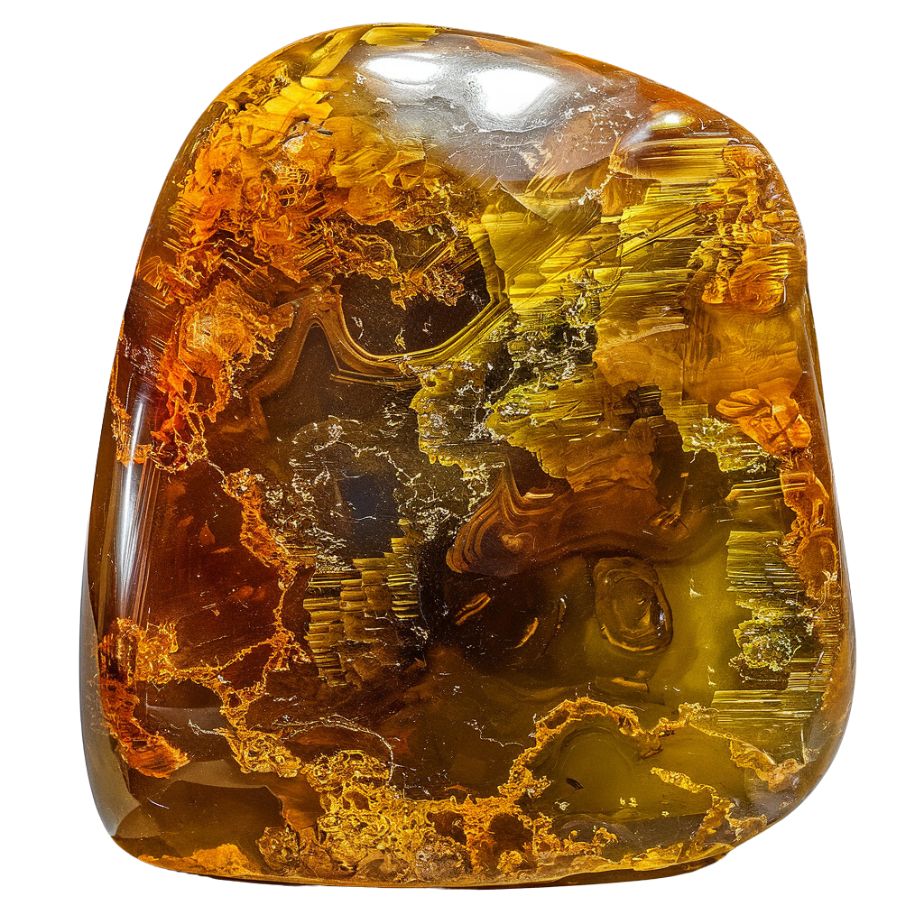
Dominican amber is famous for its exceptional clarity and brilliant colors. While most pieces show honey and cognac tones, some rare specimens display stunning blue and green hues. The transparency is so remarkable that you can clearly see tiny details of preserved insects and plants inside.
A special variety called blue amber makes Dominican amber truly unique. When held under sunlight, these pieces transform from a pale yellow to a brilliant blue color. This happens because of a special way the amber interacts with light – a feature not found in other ambers.
The amber dates back approximately 16 to 25 million years, making it one of the youngest types of amber available.
Mexican Amber
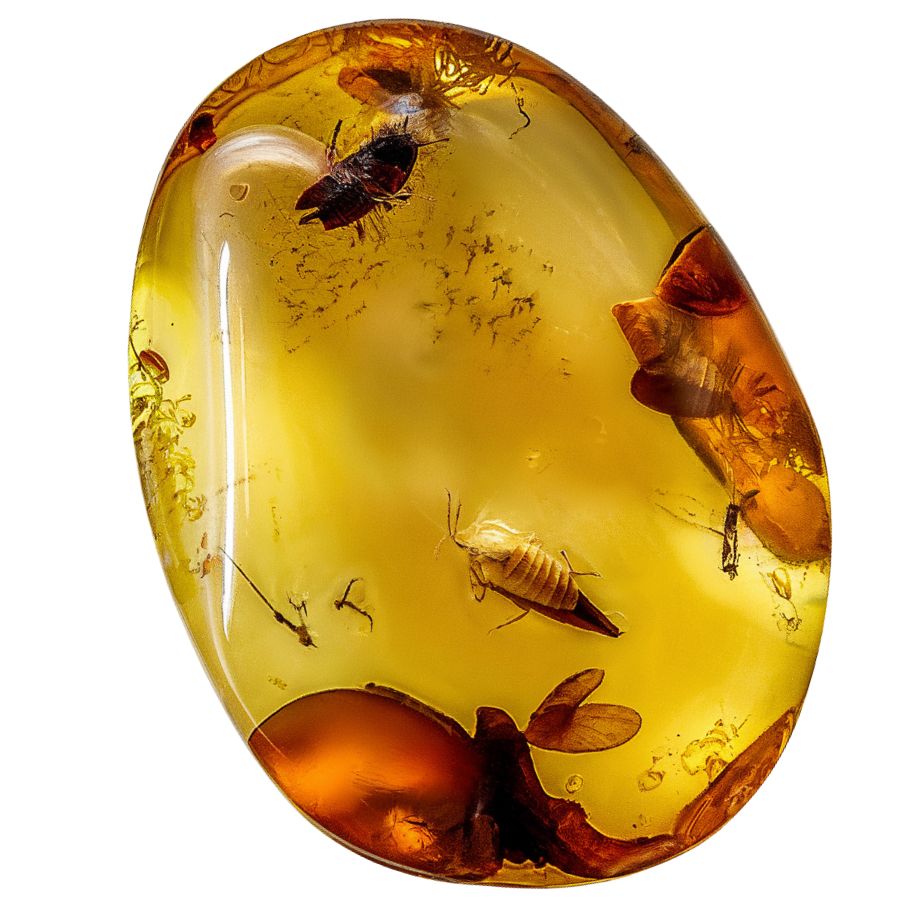
Mexican amber captivates with its rich palette of colors, from golden yellow to deep red, with occasional pieces showing rare pink or purple tints. Its extraordinary clarity allows detailed views of the ancient life preserved within, including perfectly preserved insects and plant materials.
Dating back 15-30 million years, this amber formed during a time when the region was covered in tropical forests. The resin came from an extinct species of tree related to the modern legume family, giving it distinct characteristics from other ambers.
The preservation quality of inclusions in Mexican amber is exceptional. Scientists have discovered new species of ancient insects in these time capsules, with some specimens showing details as fine as individual hair strands and wing patterns.
Oise Amber
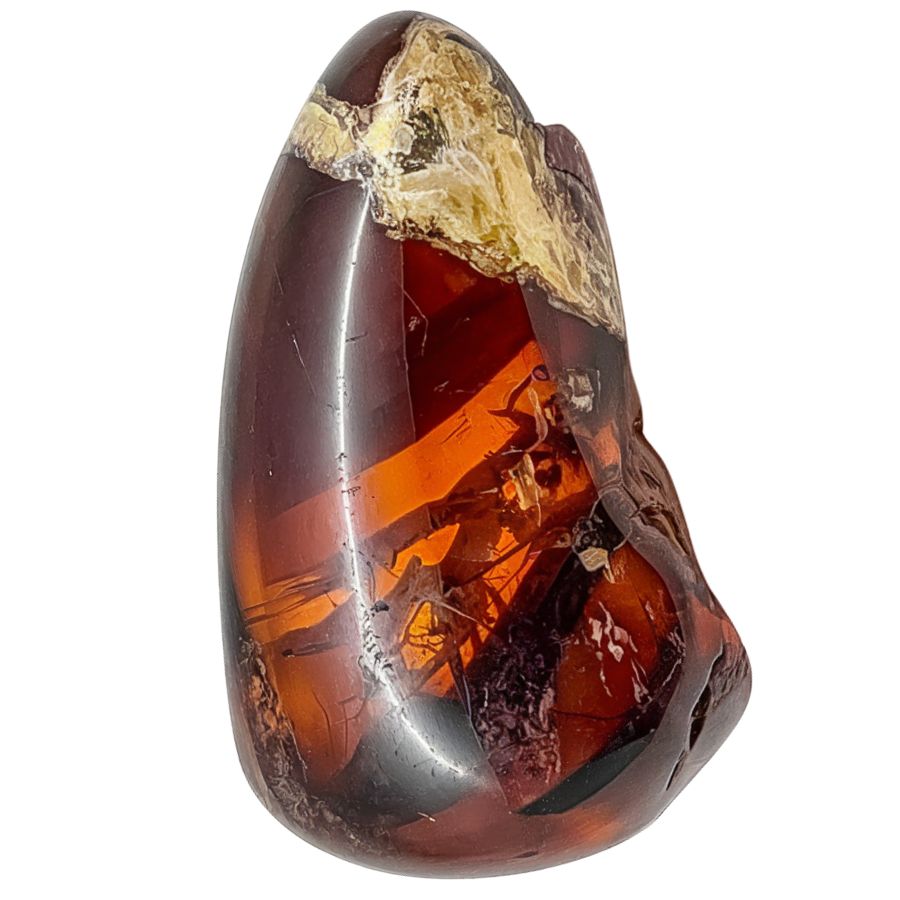
Oise amber, dating back 55-53 million years, shows remarkable transparency with subtle yellow to orange shades. Its clarity lets you see deep inside, where ancient insects and plants remain perfectly preserved since the early Eocene period.
The material has a unique density and structure that sets it apart. It’s generally thicker and more robust than other ambers, which has helped it preserve its contents so well over millions of years.
Scientists have identified over 20,000 different species in Oise amber specimens. These findings include rare insects and plants that help us understand what life was like during the early Cenozoic era.
The amber often contains multiple layers, showing different periods of resin flow. These layers create interesting patterns and sometimes trap air bubbles, making each piece unique.
Burmese Amber
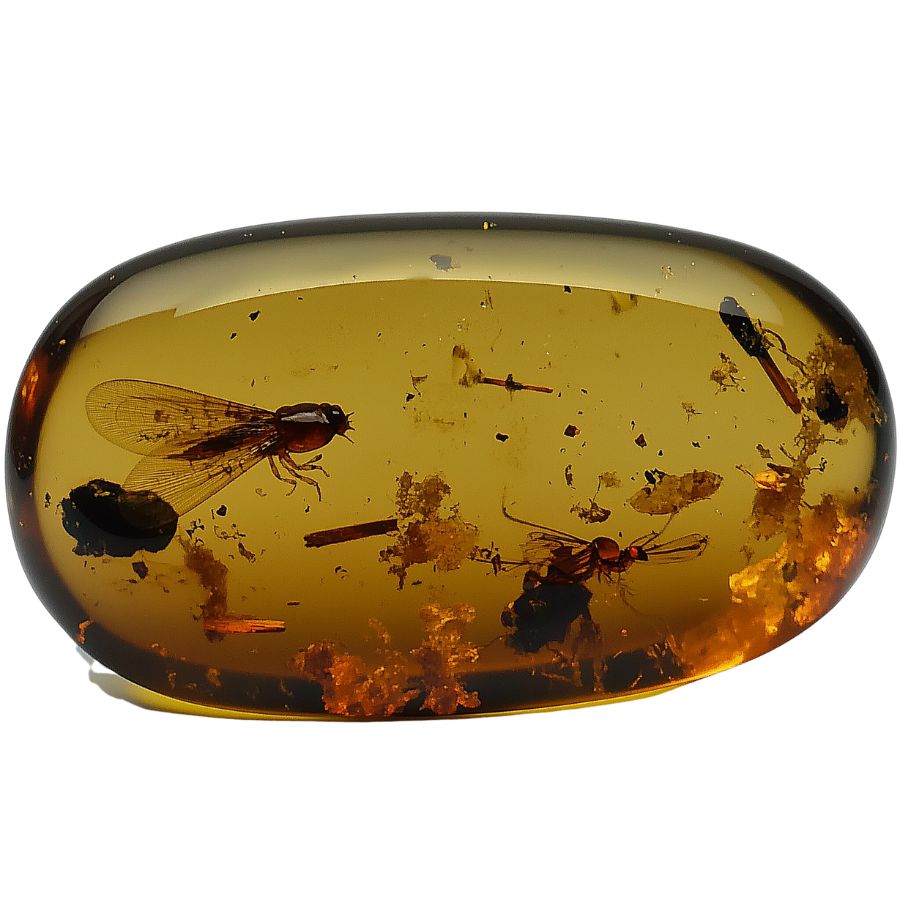
Burmese amber is super old, about 99 million years! It’s usually shaped like a flat disc and comes in reds and browns. A distinctive feature of Burmese amber is the presence of thin calcite veins that can measure between 1 mm to 4.5 mm.
Scientists have found amazing things inside, including baby birds, lizards, and even parts of dinosaurs with feathers still attached. The preservation quality is so good that they can see tiny details that are millions of years old.
The inclusions in this amber are often larger than those found in other types. You might find complete insects with all their body parts intact, or plant materials showing clear cell structures.
These preserved specimens help scientists understand what life was like during the Cretaceous period.
Sicilian Amber
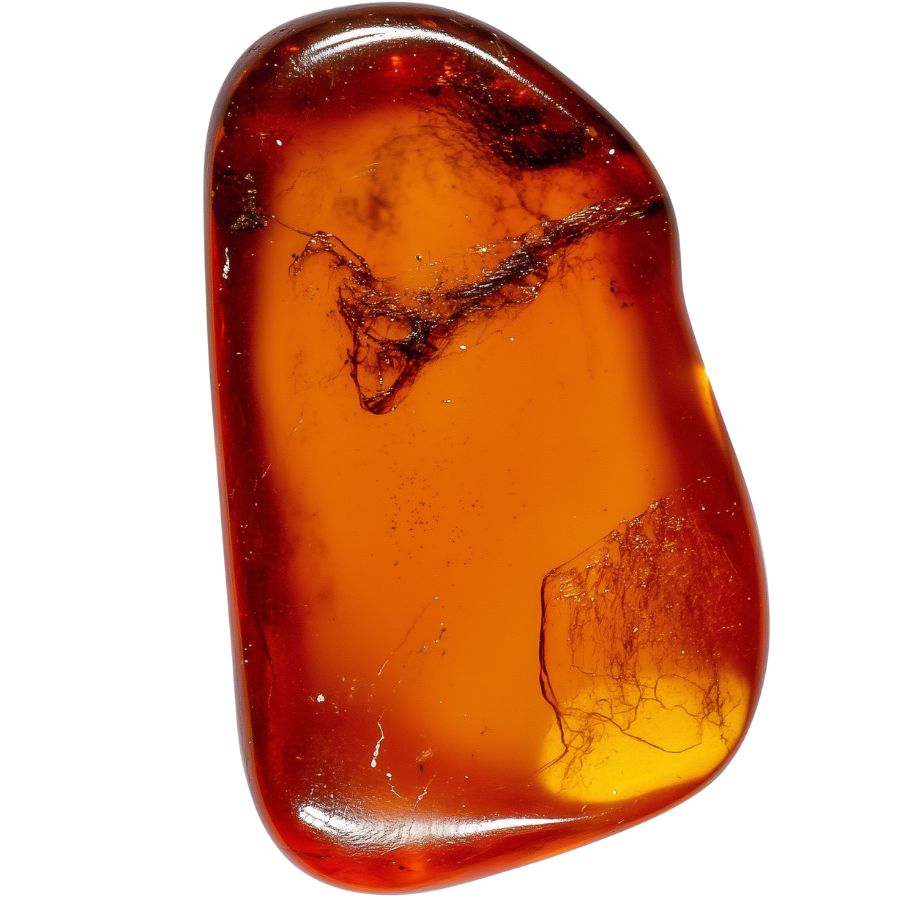
Sicilian amber shows off beautiful golden to yellowish-brown colors with exceptional clarity. The material has a uniform appearance and brilliant transparency that makes it stand out. You won’t find many air bubbles or cloudy areas in this amber.
This ancient material played a crucial role in early European trade, being used and valued about 2,000 years before Baltic amber became popular. Its age remains somewhat mysterious, but scientists believe it formed between 10 to 20 million years ago.
The formation process created amber with unique optical properties. When light passes through it, the amber seems to glow from within. This special characteristic made it highly prized throughout history.
What makes this amber special is its purity and brightness. Each piece typically shows consistent color throughout, unlike other ambers that might have varying shades or patterns. This uniformity gives it a distinct appearance that collectors can easily recognize.
Sumatran Amber
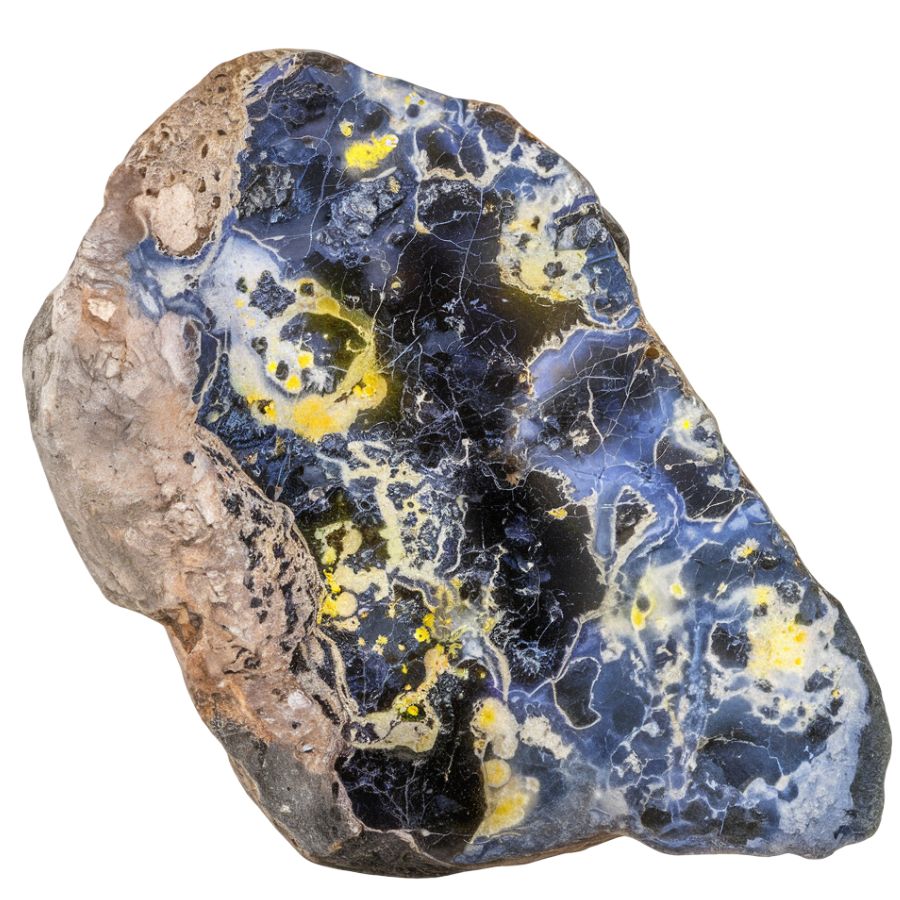
Sumatran amber comes in some really cool colors. You can find it in regular amber colors, but also in red, olive green, and even blue! The blue kind is super rare and special.
Here’s something awesome – when you shine a UV light on Sumatran blue amber, it glows! This happens because of special stuff inside the amber. Also when heated, some pieces even release a pleasant scent.
The blue Sumatran amber is famous because there are only two other places in the world where you can find blue amber. Scientists think this amber formed millions of years ago from trees that don’t exist anymore.
Collectors love Sumatran amber, especially the blue kind. It’s not just pretty – it also helps scientists learn about plants and animals that lived long ago.
Lebanese Amber
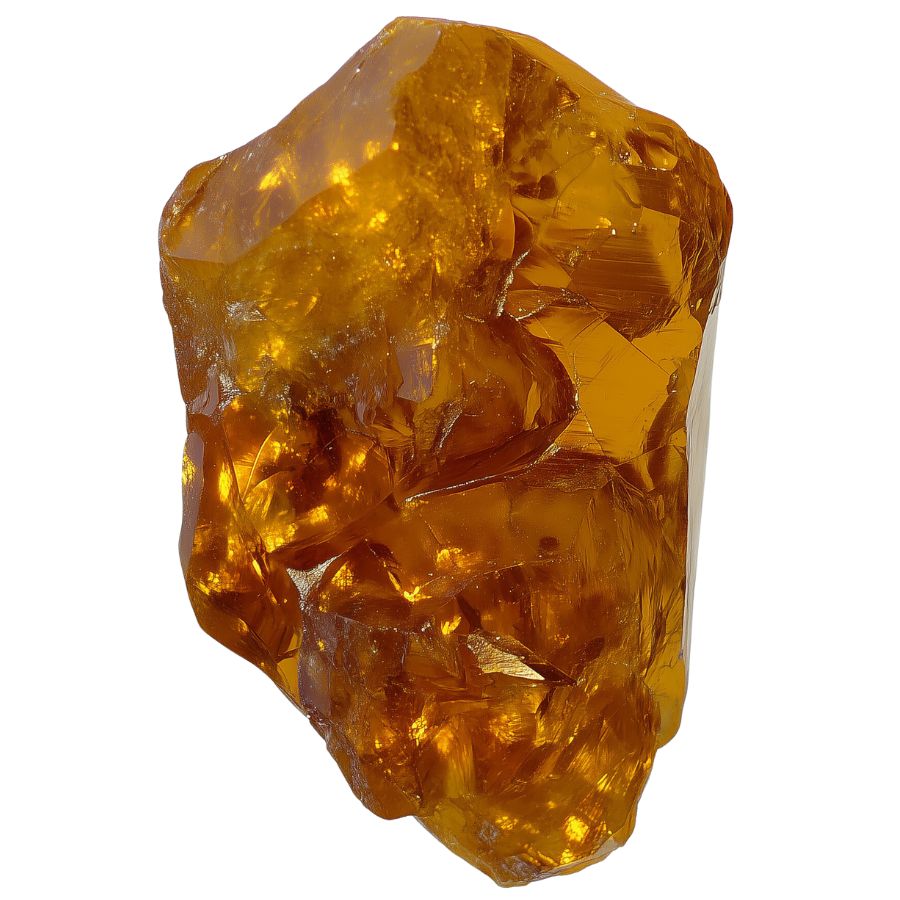
Lebanese amber shines with golden to yellowish-brown colors and remarkable clarity. The material is amazingly transparent, letting you see deep inside.
This 130-135 million-year-old amber stands out as one of the oldest known ambers in the world. Its age places it during a crucial time when flowering plants first appeared on Earth, capturing evidence of this major evolutionary transition.
The material contains some of the earliest known mosquitoes ever discovered, making it invaluable for understanding insect evolution. These mosquito specimens show how these insects adapted alongside the first flowering plants.
What’s particularly special about Lebanese amber is its role in documenting the rise of pollinating insects. The specimens inside show the beginning stages of insect-plant relationships that would later shape Earth’s ecosystems.
Bitterfeld Amber
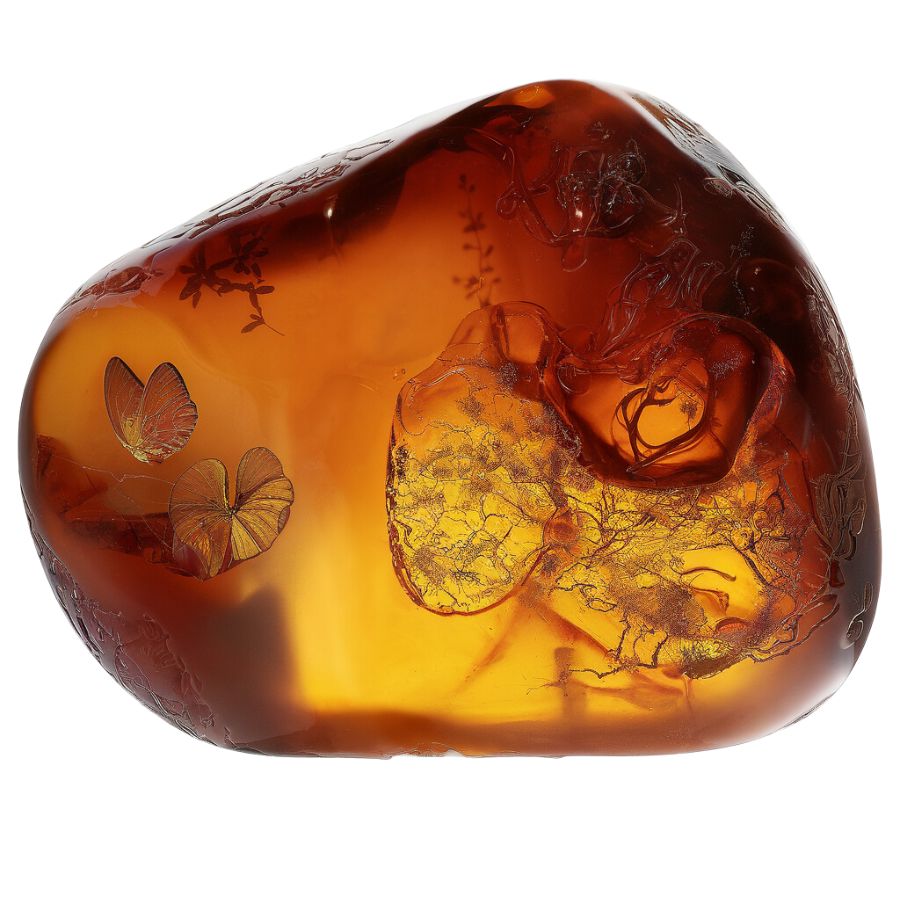
Bitterfeld amber displays warm yellow to brown colors with fascinating transparency. This amber has distinct chemical markers that indicate it came from a different type of ancient forest than those that produced other well-known ambers.
The trapped creatures inside tell a different story than Baltic or Dominican amber. Scientists have found species that don’t appear anywhere else, suggesting this area had its own distinct ecosystem millions of years ago.
The material shows evidence of a warmer climate period in ancient Europe. The preserved plants and insects indicate environmental conditions quite different from what other European ambers reveal about their time periods.
Recent studies of this amber have challenged previous theories about amber formation in Europe, suggesting multiple independent amber-producing forests existed rather than just one major source.
Caribbean Amber
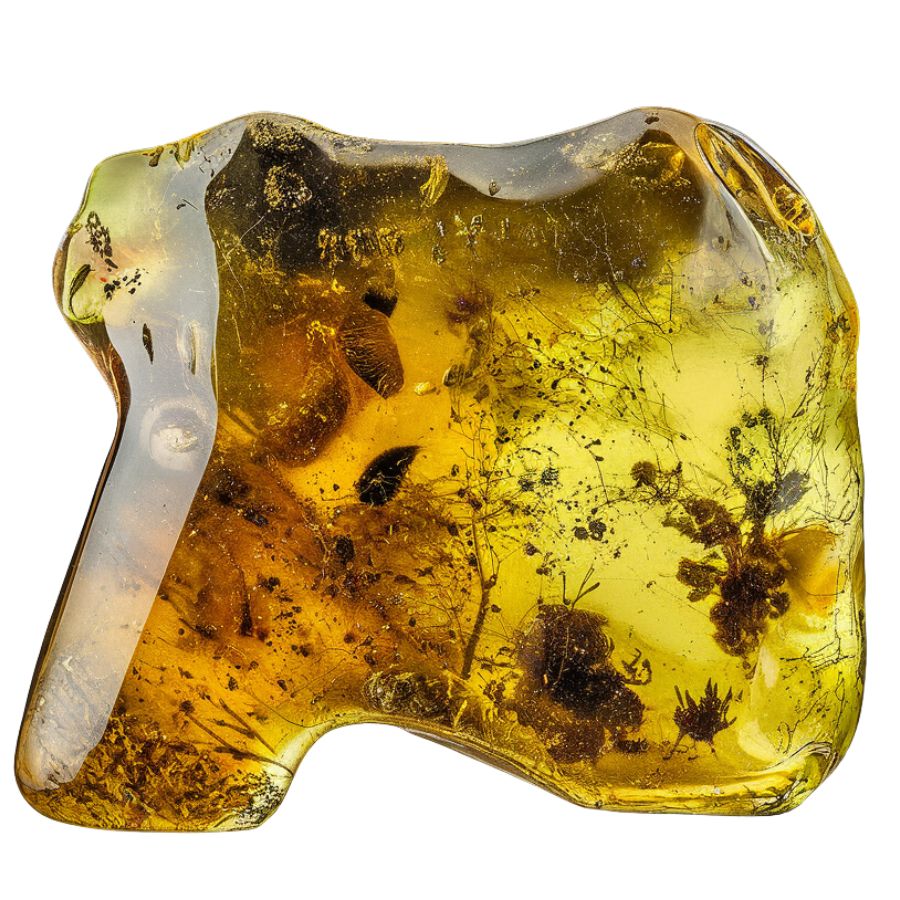
Caribbean amber is famous for its exceptional clarity and brilliant colors. You can find pieces in yellow, honey, and red shades. Espeically the rare blue variety found in Caribbean amber is created by a unique interaction between light and hydrocarbons trapped inside.
These pieces contain tropical species that reveal details about ancient Caribbean rainforests. The preserved creatures are distinctly different from those found in amber from other regions, showing how island ecosystems evolved separately.
The material offers insights into species that existed before the Caribbean islands separated from mainland America. This helps scientists understand how island isolation affects evolution.
The preservation quality is so exceptional that scientists have discovered new species of extinct animals that weren’t known from any other fossil sources, including unique types of lizards and spiders.
What Rough Amber Looks Like
Before you get excited about finding amber, let’s dive into how to spot this fascinating fossilized tree resin in its natural, unpolished state.
Check for a Glassy or Waxy Luster
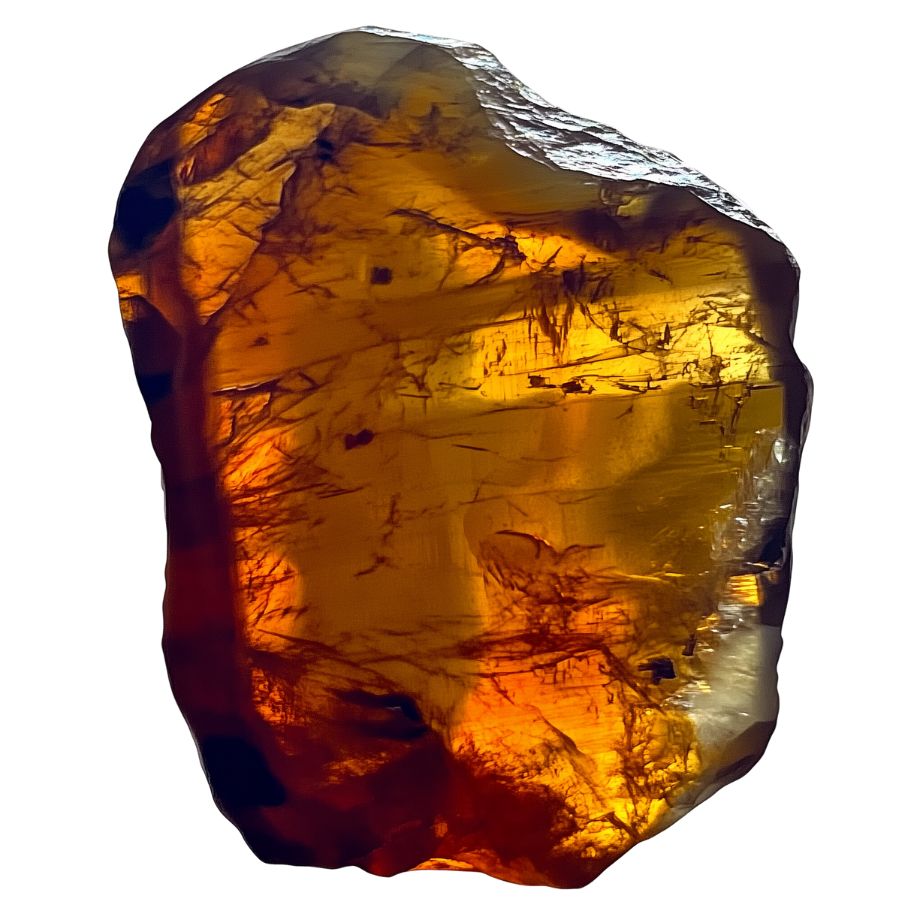
Raw amber typically has a subtle, waxy sheen – quite different from regular rocks. It’s not super shiny like polished amber, but it’s got this unique greasy-looking surface.
If you spot something that looks like hardened honey or tree sap, you might be onto something! Even in its rough state, amber often has translucent edges when held up to light.
If you want REAL results finding incredible rocks and minerals you need one of these 👇👇👇
Finding the coolest rocks in isn’t luck, it's knowing what to look for. Thousands of your fellow rock hunters are already carrying Rock Chasing field guides. Maybe it's time you joined the community.
Lightweight, mud-proof, and packed with clear photos, it’s become the go-to tool for anyone interested discovering what’s hidden under our red dirt and what they've already found.
Join them, and make your next rockhounding trip actually pay off.
What makes it different:
- 📍 Find and identify 140 incredible crystals, rocks, gemstones, minerals, and geodes across the USA
- 🚙 Field-tested across America's rivers, ranchlands, mountains, and roadcuts
- 📘 Heavy duty laminated pages resist dust, sweat, and water
- 🧠 Zero fluff — just clear visuals and straight-to-the-point info
- ⭐ Rated 4.8★ by real collectors who actually use it in the field
Look for the Distinctive Colors
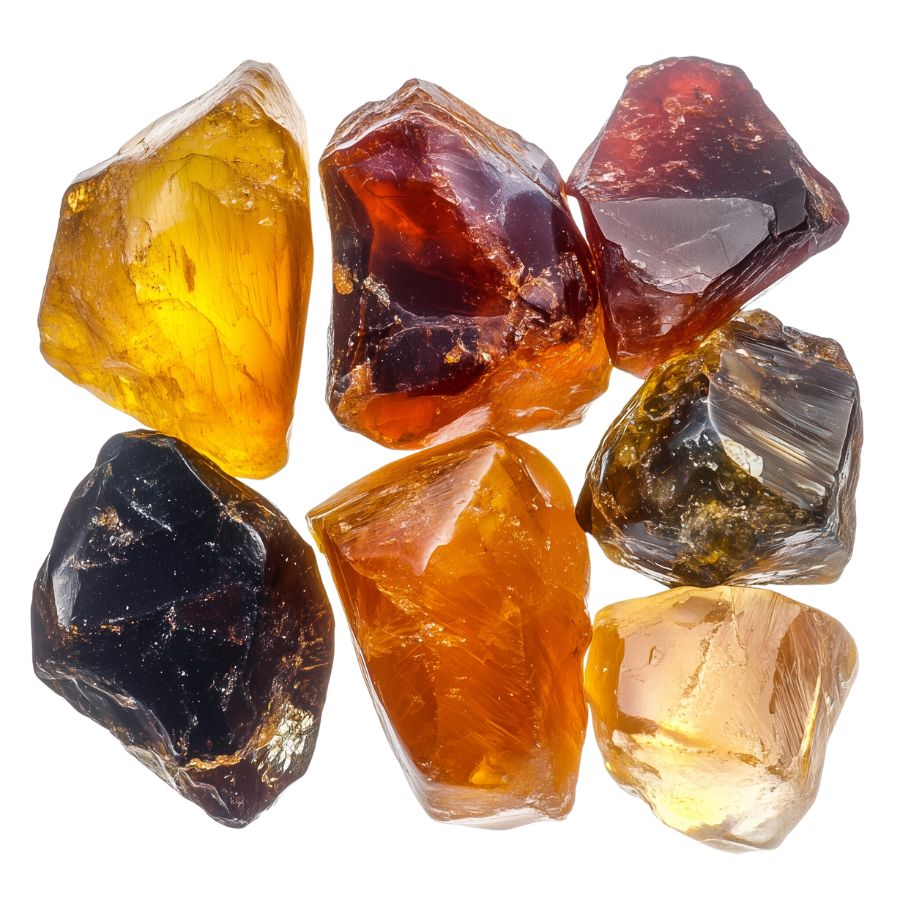
Natural amber comes in an amazing range of hues, but most rough pieces are a cloudy yellow-orange or butterscotch color. Some pieces might have whitish surface oxidation (we call it “amber cortex”).
You might also spot deeper cognac browns or even rare blue pieces. Don’t be fooled by the muddy exterior – that’s totally normal for rough amber!
Assess the Density and Weight
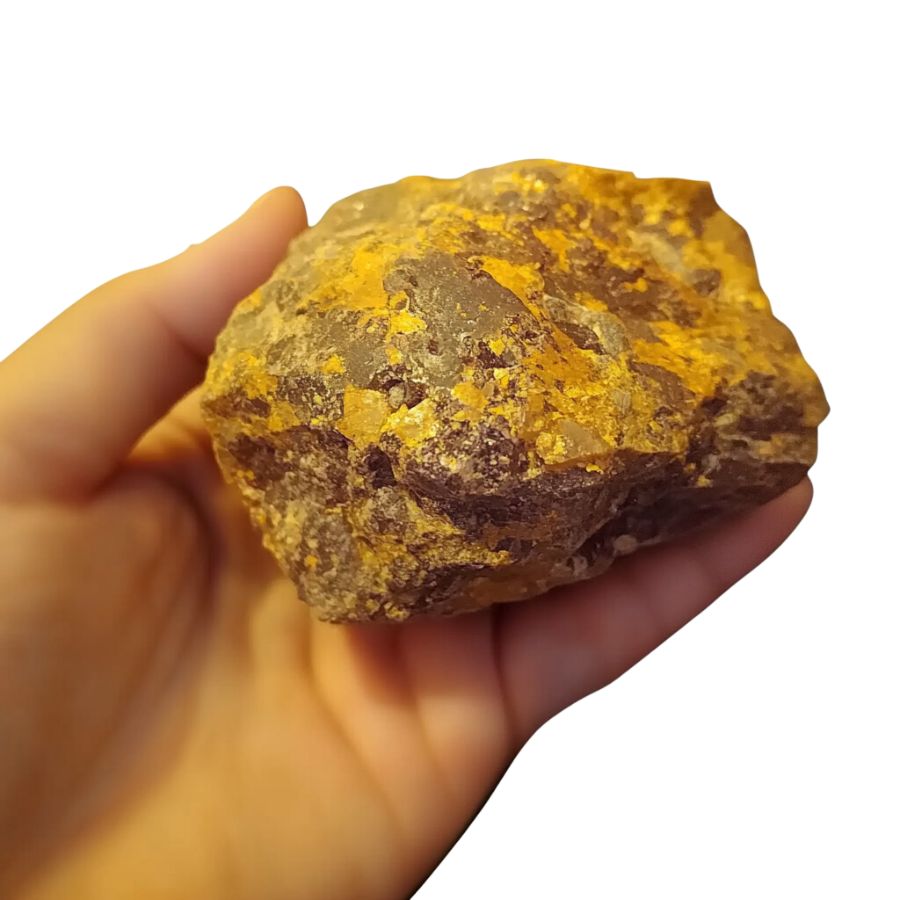
Here’s a cool trick: Amber feels surprisingly light for its size! Pick it up – if it feels lighter than a regular rock of the same size, you might have amber.
It’s about as dense as sea salt, which means it’ll float in super salty water. Unlike most stones, it’ll feel warm to touch almost immediately.
A Quick Request About Collecting
Always Confirm Access and Collection Rules!
Before heading out to any of the locations on our list you need to confirm access requirements and collection rules for both public and private locations directly with the location. We haven’t personally verified every location and the access requirements and collection rules often change without notice.
Many of the locations we mention will not allow collecting but are still great places for those who love to find beautiful rocks and minerals in the wild without keeping them. We also can’t guarantee you will find anything in these locations since they are constantly changing.
Always get updated information directly from the source ahead of time to ensure responsible rockhounding. If you want even more current options it’s always a good idea to contact local rock and mineral clubs and groups
Where to Look for Amber
Amber hunting is like a treasure hunt! Here’s where you’re most likely to find these golden gems.
Along Coastal Areas and Beaches

Hit the beaches after storms – that’s when amber tends to wash up! Focus on areas where you spot lots of seaweed or driftwood piles, as amber often gets caught in these natural collection points.
The best spots are usually where the tide leaves a dark line of debris on the sand, especially after strong waves have stirred up the seafloor and brought ancient deposits to the surface.
Investigate River Banks and Gravel Bars

Rivers are nature’s sorting machines! Check out gravel bars and sandy banks, especially downstream from eroding cliffs. Look where the water slows down and deposits lighter materials.
The best time to search is after floods when rivers have churned up new material and redeposited it along their banks.
Clay and Sand Deposits
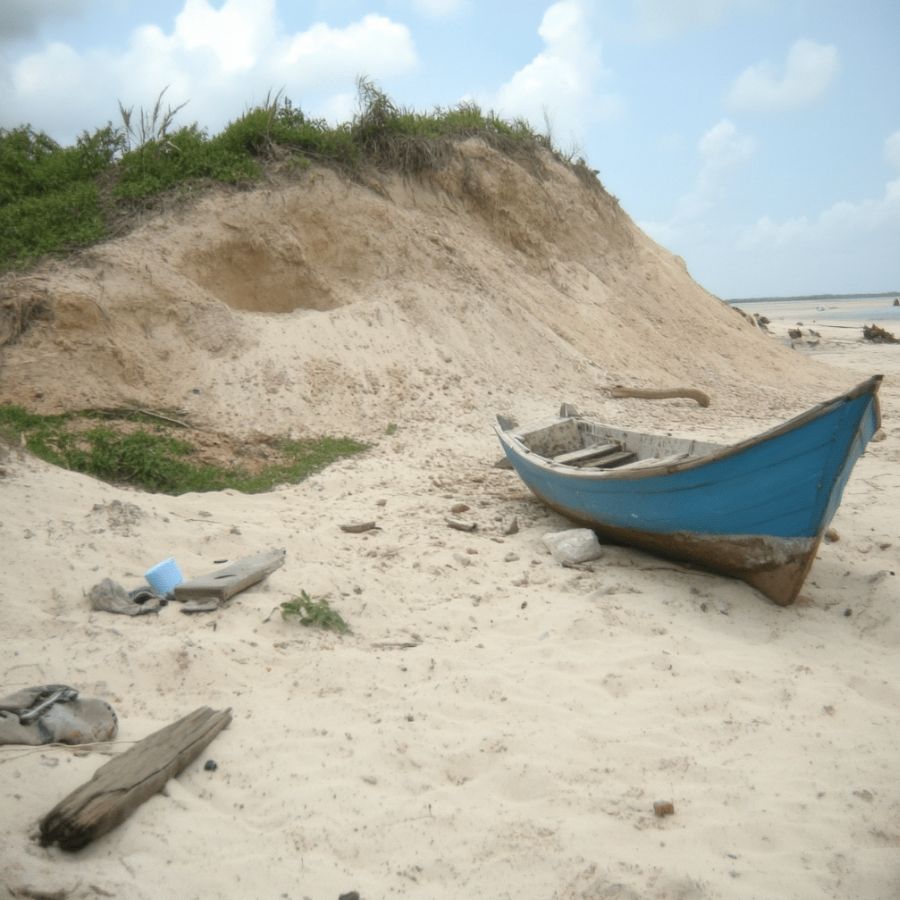
Search in areas with exposed clay banks, particularly those with dark, organic-rich layers that indicate ancient forest beds.
Sandy areas near clay deposits are prime spots because water naturally sorts materials by weight, often concentrating amber in specific layers. Look carefully after heavy rains when new material gets exposed.
Construction Sites and Quarries

With proper permission, check out newly excavated areas, especially those cutting through sedimentary layers.
Pay special attention to sandy or clayey layers that might represent ancient coastlines or forest beds. These disturbed areas often expose deposits that have been buried for millions of years.
Some Great Places To Start
These are some of the places where you can find amber around the state.
Smoky Hill River

The Smoky Hill River flows about 575 miles through Colorado and Kansas. The river runs through many different landscapes, including the Smoky Hills in north-central Kansas.
People looking for amber should know that a rare type called “jelinite” was found here. This special amber was first discovered in 1937-38 by George Jelinek along the river in Ellsworth County. Jelinite is fossilized tree resin from about 90 million years ago during the Cretaceous period. Rock collectors prize it for its unique features.
The chalk outcroppings along the river come from an ancient inland sea that existed 87 to 82 million years ago. The original spot where jelinite was discovered is now underwater in Kanopolis Reservoir. However, you might still find amber here.
The riverbanks, eroded bluffs, and areas with exposed Cretaceous sediments offer the best chances for discovery.
Jackson Area

Jackson County sits in northeastern Kansas and covers about 658 square miles. Rolling hills shape the landscape, with deep cuts near the major streams creating noticeable changes in height. The county gets around 32 inches of rain each year, supporting farming and livestock raising as the main economic activities.
Amber can be found in the glacial drift areas that cover the central and northern parts of the county. During the Pleistocene era, glaciers moved through this region, carrying and dropping various materials, including amber pieces.
The oldest rock formation in the area, called Cedar Vale Shale, appears in eastern Jackson County. This formation dates back to the Pennsylvanian period and contains fossils like brachiopods and trilobites from ancient seas.
The county’s diverse geological makeup creates interesting opportunities for rock collectors. Along with amber, visitors might discover other minerals and fossils while exploring the glacial deposits that helped shape this part of Kansas over thousands of years.
Blue Hills
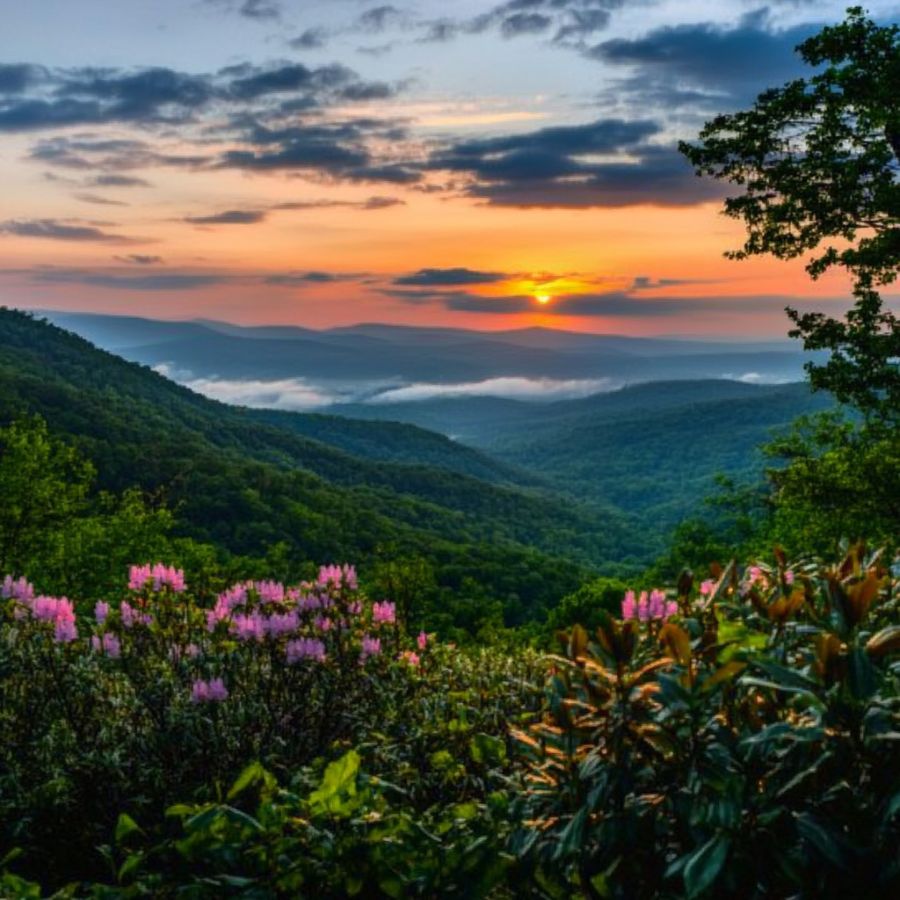
The Blue Hills rise about 300 feet above the plains in southwestern Mitchell County. These eye-catching buttes and mesas show off their distinctive blue-gray color from a distance. Blue Hill Shale makes up most of these formations, with a cap of harder Fort Hays Limestone that protected them from completely eroding away.
Amber hunters focus on the lower parts of the Blue Hill Shale, where layers of lignite (a type of coal) and carbon-rich clays create good conditions for finding fossilized tree resin. Areas where the shale has weathered down offer the best spots to search.
Special rock formations called septarian concretions make this place famous among collectors. These round or oval rocks can be up to 4 feet across and contain amazing patterns of brown calcite crystals inside. Local people sometimes call them “thundereggs.” Many collect these unique rocks for yard decorations.
Thin, rocky soil covers the hills, allowing only sparse plants to grow, which adds to their rugged beauty and makes spotting geological treasures easier during your search.
Carneiro
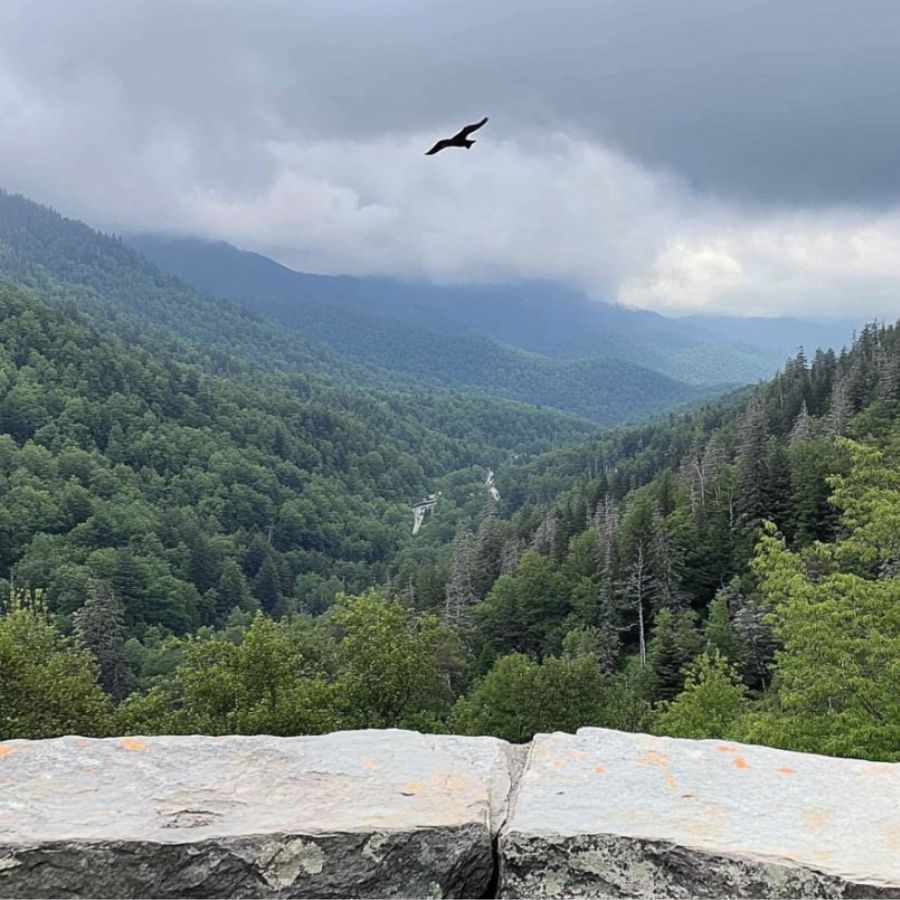
Carneiro is a small community in Ellsworth County within the Smoky Hills region. This quiet spot holds geological treasures for those who know where to look.
Rock layers from the Cretaceous period, 66 to 144 million years ago, appear throughout the area. During this time, a huge inland sea covered what is now Kansas, leaving behind different types of rock as it changed over millions of years.
Amber searchers should look for exposed shale and lignite layers around Carneiro. These dark, coal-like formations often contain the fossilized tree resin.
Just one mile south of Carneiro stands Mushroom Rock State Park, featuring strange rock formations that look like giant mushrooms. These unique shapes formed from beach sands during the Cretaceous Period. Native Americans and early pioneers used these unusual rocks as meeting places and landmarks.
Junction City
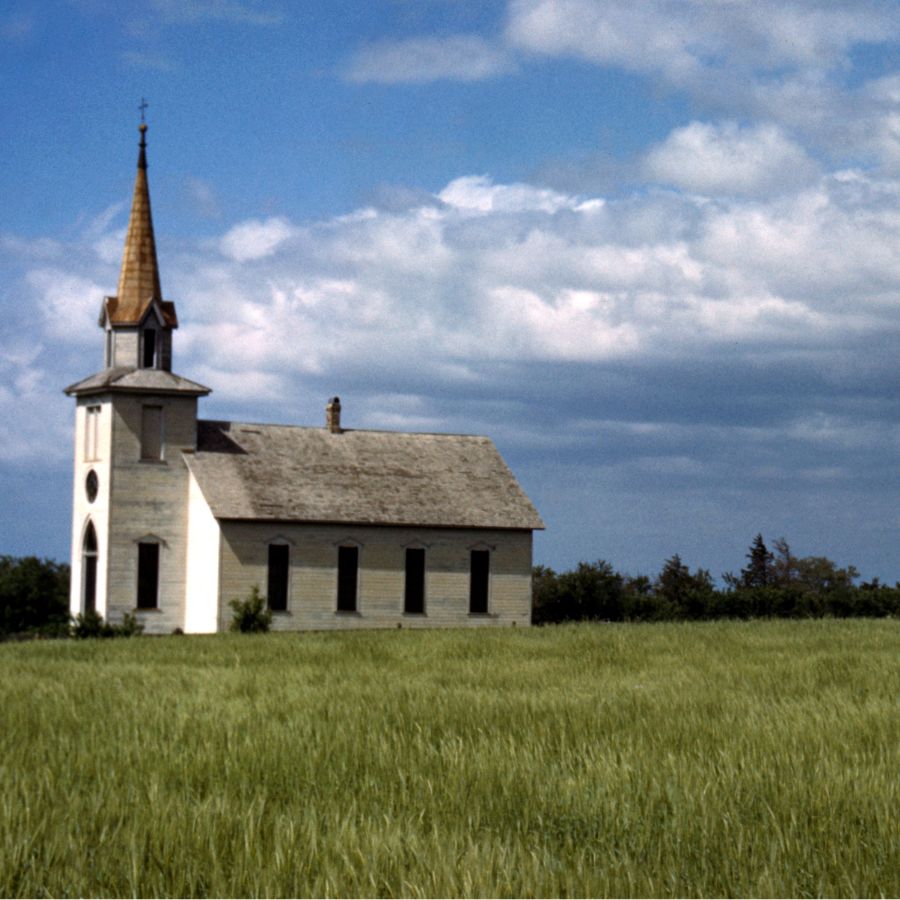
Junction City lies where the Smoky Hill and Republican rivers meet to form the Kansas River. Founded in 1854, this Geary County city has about 23,000 people and sits next to Fort Riley, a major Army base.
Rock collectors come here to explore the Dakota Formation, a layer of rocks from about 100 million years ago. These sandstones, mudstones, and shales formed from ancient river channels, floodplains, and coastal environments.
Amber searches should focus on exposed areas of the Dakota Formation, as the fossilized tree resin can be preserved within these sedimentary layers.
Evidence of early flowering plants and conifers appears in the Dakota Formation rocks, making this area important for understanding plant evolution. While looking for amber, you might discover plant fossils that tell the story of Kansas’s prehistoric past.
Places Amber has been found by county
After discussing our top picks, we wanted to discuss the other places on our list. Below is a list of the additional locations where we have succeeded, along with a breakdown of each place by county.
| County | Location |
| Republic | Republican River Gravels |
| Marshall | Big Blue River |
| Gove | Monument Rocks |
| Gove | Castle Rock |
| Russell | Wilson Lake Shorelines |
| Logan | Smoky Hill Chalk Formation |
| Chautauqua | Chautauqua Hills |
| Barber | Gypsum Hills |
| Marion | Florence Gravel Pits |
| Shawnee | Topeka Glacial Moraines |
| Greenwood | Verdigris River Gravels |
| Woodson | Rose Dome |
| Wyandotte | Bonner Springs Quarries |
| Osborne | South Fork Solomon River |
| Butler | Walnut River Near Flinthills |
| Ottawa | Ada Vicinity |
| Riley | Stockdale Igneous Rock Exposures |
| Washington | Little Blue River |

